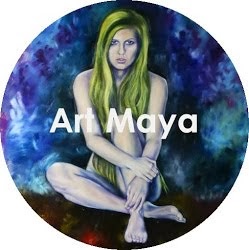

Other royal scepters ( 1979.206.1132) and ritual regalia were carved out of jadeite and other greenstones. Ceremonial blades made of flint ( 1978.412.195) or chert served as royal scepters. The resources and tools necessary-limestone quarries, chisels, blades, and polishing stones-have been found by archaeologists. A spouted chocolate vessel ( 1999.484.3) made of indurated limestone would have taken an enormous amount of carving and polishing with abrasives in order to obtain the delicate reliefs and sheen of the surface. Maya sculptors also invested a monumental amount of labor in portable goods made of stone. Working limestone or volcanic tuff with stone tools, sculptors showed realistic portraits of divine lords, courtly ladies, captives, and deities. As seen in this panel, Maya sculptors celebrated the human form in a naturalistic way, portraying royal individuals as they sit, stand, hold things, and interact with one another.

The sculptor, Chakalte’, signed this lintel and at least two other works during his career. In the Metropolitan’s Relief with Enthroned Ruler ( 1979.206.1047), the patron Shield Jaguar IV is seated on the right of the composition, receiving tribute from Tiloom, one of his subsidiary rulers. The royal courts of the Maya kings and queens employed full-time painters and sculptors, some of whom signed their works. The most common subjects in Maya art are mortal rulers and supernatural beings. After the collapse of the Classic Period kingdoms, Maya artists at northern cities like Chichén Itzá drew influence from Central Mexico and southern Central America as they adorned their temples and created spectacular offerings to their rulers and deities. 250–900), kings and queens of powerful city-states, such as Tikal, Calakmul, Palenque, and Copán, commissioned artworks to cover their royal court buildings and their regal bodies. In the first millennium B.C., Maya artists began to sculpt in stone, stucco, wood, bone, shell, and fired clay. Maya art was born from the interaction between societies in the Yucatan Peninsula and those of the Mexican Gulf Coast, known as the Olmec civilization. Sculpture for the ancient Maya spans all media, from the miniature to the monumental, as artists gave shape to materials extracted from the landscape.


 0 kommentar(er)
0 kommentar(er)
